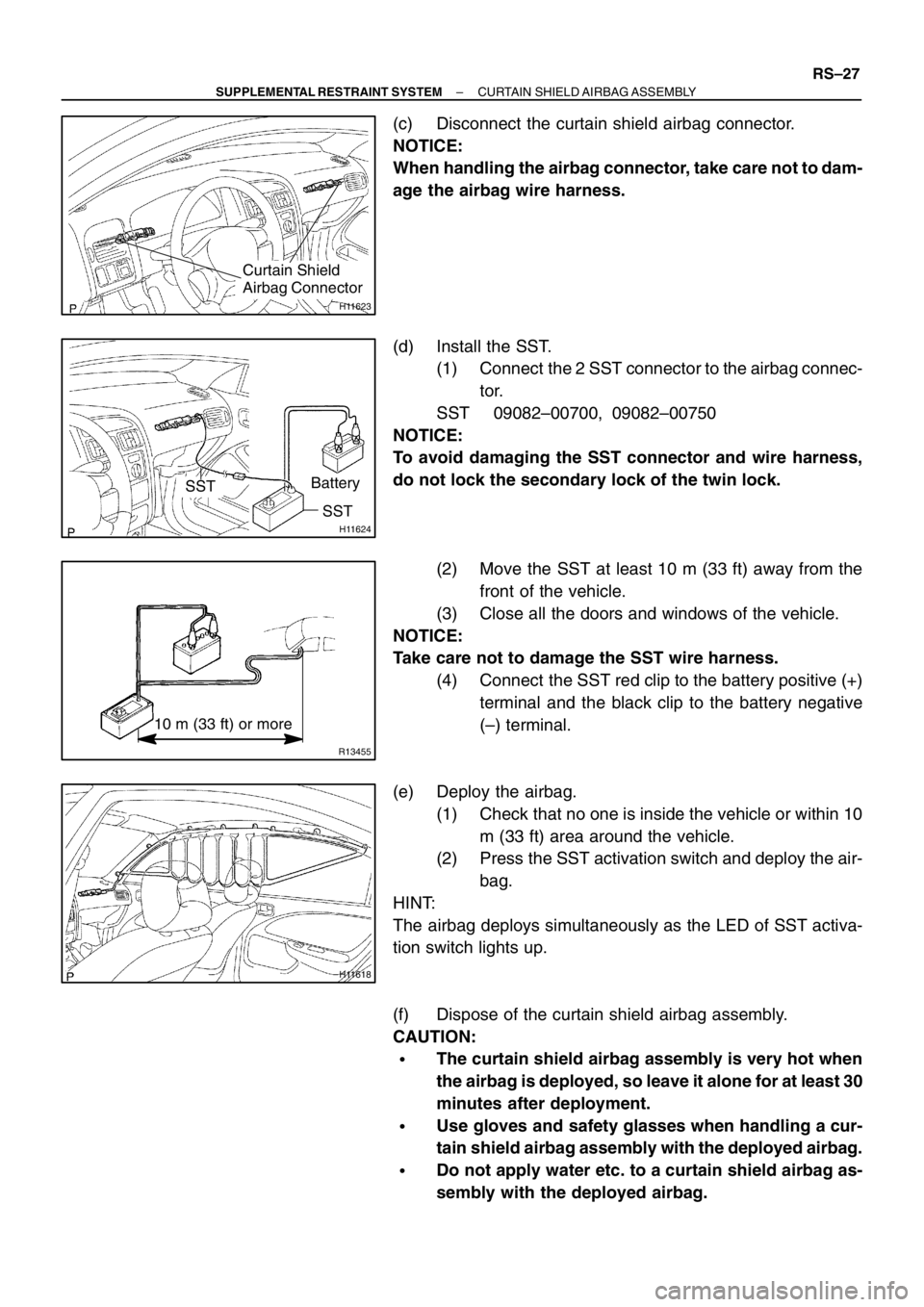Page 22 of 349

B07465
New
Previous
– INTRODUCTIONFOR ALL OF VEHICLES
IN–17
5. FOR VEHICLES EQUIPPED WITH POWER WINDOW CONTROL SYSTEM
When the battery is disconnected or the power to the window regulator motor is cut, the power window con-
trol system does not operate. It is necessary to initialize the system in the following procedures. Otherwise
window cannot be operated normally.
(1) Close window to the highest position.
(2) Keep holding the switch for 5 seconds.
(3) Check that automatic operation works. If not, repeat the above procedures.
6. FOR VEHICLES EQUIPPED WITH SLIDING ROOF SYSTEM
Sliding roof stop position might be required to be initialized when battery failures (such as battery disconnec-
tion, connector disconnection and the voltage drop) are detected while the system is in operation. This also
occurs when rotating the motor with the battery disconnected. Sliding roof initialization can be done by the
following procedures.
(1) Operate the roof up to the maximum tilt position.
(2) Release the switch, and push it again in the same direction. (After 10 seconds have elapsed,
initialization begins.)
(3) The roof starts automatic operation if holding the switch, completes full one cycle (tilt down, slide
open, slide close and tilt up) of travel. Do not release the switch until the roof stops.
(4) Check that the roof stops at the correct position.
7. FOR VEHICLES EQUIPPED WITH BRAKE PIPE FIT-
TING OF NEW STANDARD
A flare shape of a new standard is used for the brake pipe fitting
from this changed models.
NOTICE:
�When ordering or replacing the parts, please be sure
to check and use the fitting of the same flare type.
�Do not over–tighten them more than the standard
torque.
Torque: 15 N·m (155 kgf·cm, 11 ft·lbf)
Page 29 of 349

������
B02390
HEAT METHOD: When the problem seems to occur when the suspect area is heated. 2
NOTICE:3 WATER SPRINKLING METHOD:
(1)
(2)
4 OTHER: When a malfunction seems to occur when electrical load is excessive.When the malfunction seems to occur on a rainy day or in a
high–humidity condition. Heat the component that is the likely cause of the malfunction
with a hair dryer or similar object. Check to see if the malfunction
occurs.
Sprinkle water onto the vehicle and check to see if the malfunc-
tion occurs.
Turn on all electrical loads including the heater blower, head
lights, rear window defogger, etc. and check to see if the mal-
function occurs.ON HINT:
If a vehicle is subject to water leakage, the leaked water may
contaminate the ECU. When testing a vehicle with a water leak-
age problem, special caution must be taken.
Malfunc-
tion
Do not heat to more than 60 C (140 F). (Temperature
is limited not to damage the components.)
Do not apply heat directly to parts in the ECU. (1)
(2)
Never sprinkle water directly into the engine compart-
ment, but indirectly change the temperature and hu-
midity by applying water spray onto the radiator front
surface.
Never apply water directly onto the electronic compo-
nents. NOTICE: IN–24
– INTRODUCTIONHOW TO TROUBLESHOOT ECU CONTROLLED
SYSTEMS
Page 231 of 349

AB0158
Battery
SST
H04668
H04669
Battery
SST
R13455
10 m (33 ft) or more
H04540
– SUPPLEMENTAL RESTRAINT SYSTEMSIDE AIRBAG ASSEMBLY
RS–13
1. AIRBAG DEPLOYMENT WHEN SCRAPPING VE-
HICLE
HINT:
Have a battery ready as the power source to deploy the airbag.
(a) Check functioning of the SST. (See Pub. No. RM599E on
page RS–17)
SST 09082–00700
(b) Disconnect the side airbag connector.
NOTICE:
When handling the airbag connector, take care not to dam-
age the airbag wire harness.
(c) Install the SST.
(1) Connect the 2 SST connector to the airbag connec-
tor.
SST 09082–00700, 09082–00750
NOTICE:
To avoid damaging the SST connector and wire harness,
do not lock the secondary lock of the twin lock.
(2) Move the SST at least 10 m (33 ft) away from the
front of the vehicle.
(3) Close all the doors and windows of the vehicle.
NOTICE:
Take care not to damage the SST wire harness.
(4) Connect the SST red clip to the battery positive (+)
terminal and the black clip to the battery negative
(–) terminal.
(d) Deploy the airbag.
(1) Check that no one is inside the vehicle or within 10
m (33 ft) area around the vehicle.
(2) Press the SST activation switch and deploy the air-
bag.
HINT:
The airbag deploys simultaneously as the LED of SST activa-
tion switch lights up.
Page 245 of 349

H11623
Curtain Shield
Airbag Connector
H11624
Battery
SST
SST
R13455
10 m (33 ft) or more
H11618
– SUPPLEMENTAL RESTRAINT SYSTEMCURTAIN SHIELD AIRBAG ASSEMBLY
RS–27
(c) Disconnect the curtain shield airbag connector.
NOTICE:
When handling the airbag connector, take care not to dam-
age the airbag wire harness.
(d) Install the SST.
(1) Connect the 2 SST connector to the airbag connec-
tor.
SST 09082–00700, 09082–00750
NOTICE:
To avoid damaging the SST connector and wire harness,
do not lock the secondary lock of the twin lock.
(2) Move the SST at least 10 m (33 ft) away from the
front of the vehicle.
(3) Close all the doors and windows of the vehicle.
NOTICE:
Take care not to damage the SST wire harness.
(4) Connect the SST red clip to the battery positive (+)
terminal and the black clip to the battery negative
(–) terminal.
(e) Deploy the airbag.
(1) Check that no one is inside the vehicle or within 10
m (33 ft) area around the vehicle.
(2) Press the SST activation switch and deploy the air-
bag.
HINT:
The airbag deploys simultaneously as the LED of SST activa-
tion switch lights up.
(f) Dispose of the curtain shield airbag assembly.
CAUTION:
�The curtain shield airbag assembly is very hot when
the airbag is deployed, so leave it alone for at least 30
minutes after deployment.
�Use gloves and safety glasses when handling a cur-
tain shield airbag assembly with the deployed airbag.
�Do not apply water etc. to a curtain shield airbag as-
sembly with the deployed airbag.